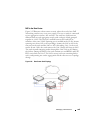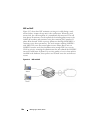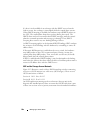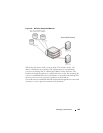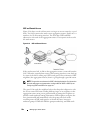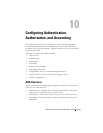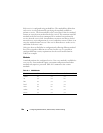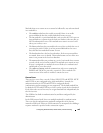
202 Managing a Switch Stack
If a host is in the middle of an exchange with the DHCP server when the
failover occurs, the exchange is interrupted while the control plane restarts.
When DHCP snooping is enabled, the hardware traps all DHCP packets to
the CPU. The control plane drops these packets during the restart. The
DHCP client and server retransmit their DHCP messages until the control
plane has resumed operation and messages get through. Thus, DHCP
snooping does not miss any new bindings during a failover.
As DHCP snooping applies its checkpointed DHCP bindings, IPSG confirms
the existence of the bindings with the hardware by reinstalling its source IP
address filters.
If Dynamic ARP Inspection is enabled on the access switch, the hardware
traps ARP packets to the CPU on untrusted ports. During a restart, the
control plane drops ARP packets. Thus, new traffic sessions may be briefly
delayed until after the control plane restarts.
If IPSG is enabled and a DHCP binding is not checkpointed to the backup
unit before the failover, that host will not be able to send data packets until it
renews its IP address lease with the DHCP server.
NSF and the Storage Access Network
Figure 9-15 illustrates a stack of three Dell Networking switches connecting
two servers (iSCSI initiators) to a disk array (iSCSI targets). There are two
iSCSI connections as follows:
Session A: 10.1.1.10 to 10.1.1.3
Session B: 10.1.1.11 to 10.1.1.1
An iSCSI application running on the stack master (the top unit in the
diagram) has installed priority filters to ensure that iSCSI traffic that is part
of these two sessions receives priority treatment when forwarded in hardware.








